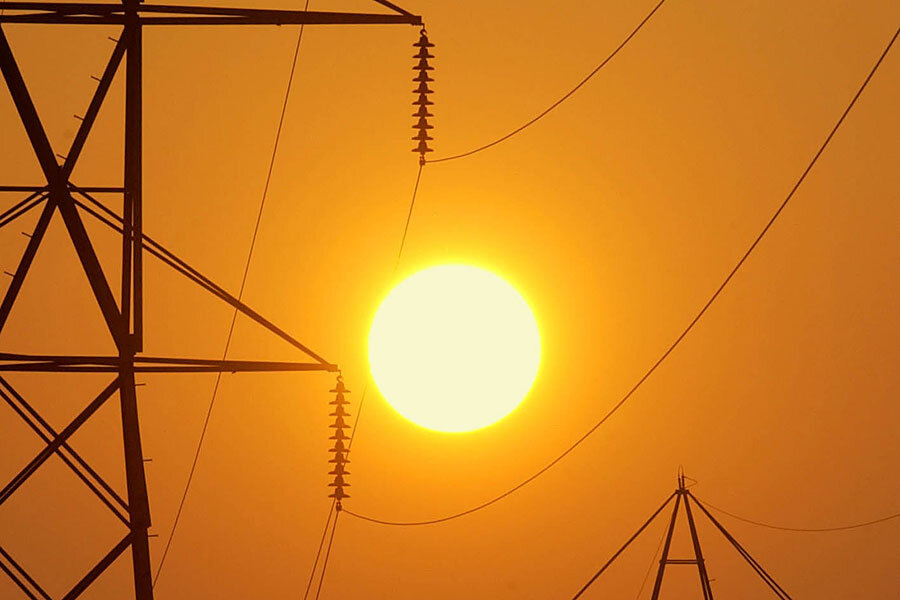Is US vulnerable to EMP attack? A doomsday warning, and its skeptics
Loading...
| Washington
It is an unsettling doomsday scenario: A ballistic missile is launched from a freighter near America’s shores, setting off a nuclear explosion in the atmosphere. The blast generates electromagnetic pulses (EMPs) that could take out the nation’s electrical grid and bring civilization as we know it “to a cold, dark halt.”
This warning comes from the former director of the CIA, James Woolsey, in little-noticed testimony recently before the House Armed Services Committee.
A nuclear weapon would be detonated in orbit “in order to destroy much of the electric grid from above the US with a single explosion,” he told lawmakers last week. “Two thirds of the US population would likely perish from starvation, disease, and societal breakdown. Other experts estimate the likely loss to be closer to 90 percent.”
This dire forecast included warning of an “increasing likelihood that rogue nations such as North Korea (and before long, most likely, Iran) will soon match Russia and China in that they will have the primary ingredients for an EMP attack: simple ballistic missiles such as SCUDs that could be launched from a freighter near our shores.”
Mr. Woolsey sprinkled in a bit of intelligence as well. “In 2004,” he noted to lawmakers, “the Russians told us that their ‘brain drain’ had been helping the North Koreans develop EMP weapons.”
So, how plausible is this sort of scenario? A number of defense analysts take issue with the idea that an EMP attack on the US is imminent, or even particularly likely. They also suggested the outcome of the attack would not be so dire.
“I think the wild hysteria that’s greeted EMP attacks lately is wildly overstated,” says James Lewis, director of the Strategic Technologies Program at the Center for Strategic and International Studies in Washington.
“So if you’re North Korea, and you’ve got a nuclear weapon, and you detonate it over the United States, what’s going to happen next? The answer is hundreds of nukes will descend on you from the US,” he says. “So why would you waste the round? If they’re going to shoot a nuke at us, they’re not going to bother with this EMP stuff.”
What’s more, although Woolsey told lawmakers that “modern electronics are a million times more vulnerable to EMP than the electronics of the 1960s,” Mr. Lewis argues that radiation hardening has been built into many modern electronics, through chips that have become more sophisticated. “Before, there were vacuum tubes, and now you’re using a chip that can withstand a fair amount of radiation,” Lewis says.
So what’s the bottom line? If a country or terrorist group “were crazy enough to shoot a nuclear weapon up over Washington, D.C. [to try to create an EMP], you might be able to fry 30 percent of the electronics in the city,” Lewis says.
Solar flares can create EMPs as well, Woolsey noted, citing a 1989 solar-generated pulse that, he told lawmakers, “effectively destroyed Quebec’s electric grid.” According to an article on a NASA website that looked back at the event 10 years later, the power was out in Quebec for 12 hours.
While an EMP attack may not be likely, the possibility raises some interesting strategic questions, says Paul Scharre, project director for the 20YY Warfare Initiative at the Center for a New American Security.
“If a nuclear-armed actor, instead of actually killing civilians with a nuclear weapon, lights it off at a high altitude,” he asks. “Does that cross the nuclear threshold? What’s the appropriate response? How would we respond? There’s not really a good answer for that.”







